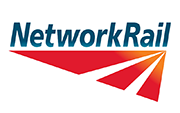off
When You Book Multiple Courses.
Qualify By Booking Multiple Places Or Courses. Book With Friends Or Your Team.
Temporary works keep people safe while permanent structures are being built. They include items such as formwork, scaffolds, shoring, propping, working platforms, hoardings and access arrangements. When these parts are planned well, checked well and removed well, projects run smoothly and teams stay safe. When they are not, risk increases fast. This is why every project needs clear responsibility, strong process and trained people in the key roles that manage temporary works from start to finish.
At Target Zero we help teams build this competence through our specialist training for coordinators and supervisors. Explore our course dates and formats here:
- Temporary Works Coordinator Online Course
- Temporary Works Coordinator Refresher Online Courses
- Temporary Works Supervisor Online Course
- Mock Tests
Why temporary works matter on every site
- They stabilise excavations and partially built structures so that people can work without unnecessary risk.
- They control loads and movement while concrete cures or steelwork is connected.
- They provide safe access and edge protection so that routine tasks can be carried out with confidence.
- They protect the public, neighbours and other trades through clear segregation and barriers.
Good management of temporary works is about planning, competence and communication. It is also about stopping work quickly when something does not look right. Trained coordinators and supervisors give a project that control.
The core roles that make temporary works safe
Temporary Works Coordinator
The coordinator sets the system. Typical responsibilities include planning what is needed, arranging competent design, agreeing checks, keeping a live register, confirming inspections before use and signing off removal when the permanent works can stand alone. The coordinator must have the authority to pause work if requirements are not met.
Build the right foundation with our Temporary Works Coordinator Online Course. If your certificate is due to expire, keep your competence current with our Temporary Works Coordinator Refresher Online Courses.
Temporary Works Supervisor
The supervisor turns plans into safe reality on site. Daily duties include checking that the build matches the approved design, recording routine inspections, watching for change in loads or conditions, and raising concerns early with the coordinator.
Develop these practical skills with our Temporary Works Supervisor Online Course.
The temporary works life cycle on a safe project
- Plan
Identify what the project needs, where and for how long. Define responsibilities and information flow between designers, principal contractor and trade contractors. - Design and check
Arrange competent design and the right level of independent check. Confirm loads, ground conditions, sequence and how the system will be inspected in service. - Brief and prepare
Share the design with the team. Explain limits, hold points and inspection requirements. Make sure materials and equipment match the design. - Build and inspect
Construct as designed. Record inspections before first use and at the required intervals. Do not use the system until it has been confirmed as safe to load. - Monitor and control change
If conditions change, stop and reassess. Never alter a system without design approval and a clear update to the method of work. - Remove and hand over
When the permanent works can stand alone, remove the temporary works in a controlled sequence. Close out records and update the register.
Common risks and how trained teams reduce them
- Unclear responsibility
Appoint a named coordinator and a named supervisor. Give them time, access and authority. - Design not followed
Keep the latest design on site. The supervisor checks that materials, dimensions and ties match the drawing and the method of work. - Change without review
Weather, ground and live loads can shift. A trained team stops, checks and gains approval before continuing. - Gaps in inspection and records
Set inspection frequency in advance and record every check. The register should show status at a glance. - Removal too early
Confirm that the permanent works can carry the required loads before removal. Follow the designed sequence for striking.
Training that turns process into competence
Target Zero courses are built around real projects and practical decision making. You will work through case studies, short tasks and scenario discussions so that you can apply the principles the same day on site.
- Get started as a lead with the Temporary Works Coordinator Online Course.
- Keep knowledge fresh with the Temporary Works Coordinator Refresher Online Courses.
- Build day to day control with the Temporary Works Supervisor Online Course.
- Practise exam style questions with our Mock Tests.
Choosing the right route for your role
Choose the coordinator course if you lead planning, design coordination, registers and approvals. Choose the supervisor course if you lead daily checks, control of work and front line coordination with trades. If you already hold a coordinator certificate that is nearing expiry, book the refresher to maintain your competence and keep your record current.
Final thoughts and next steps
Temporary works protect people, plant and the surrounding environment while the permanent structure takes shape. Safe projects rely on clear responsibility and trained people who know when to act and when to stop. If you want to raise standards on your site, begin with the right training today.
Book your place:
- Temporary Works Coordinator Online Course
- Temporary Works Coordinator Refresher Online Courses
- Temporary Works Supervisor Online Course
- Mock Tests
prices
ever
Complete All NVQs, From Anywhere
Flexible Remote Learning with an Assessor – Start Now From 0% Deposit*
*Eligibility Criteria Apply











































